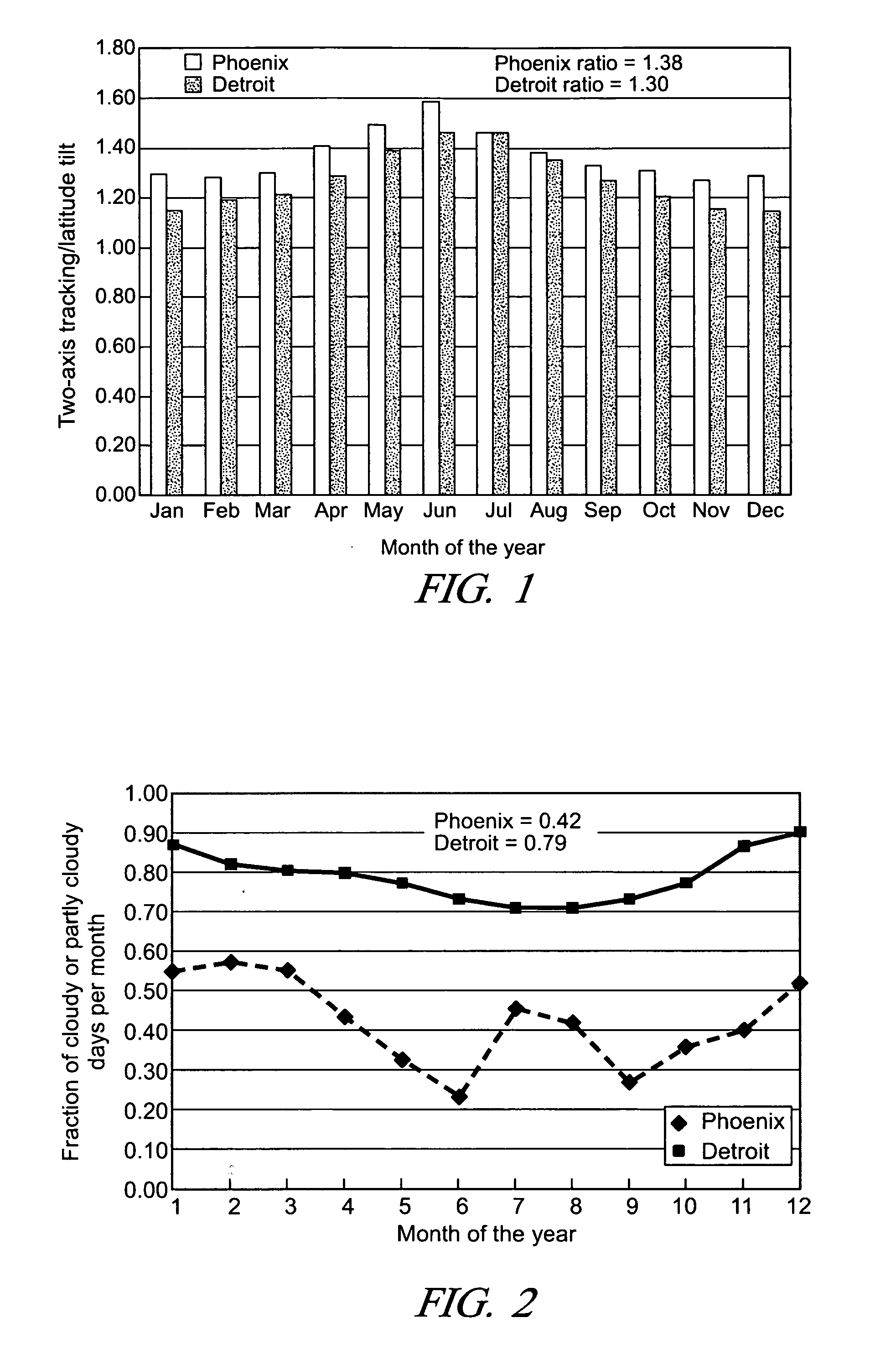Solar photovoltaic output for cloudy conditions with a solar tracking system
a solar tracking and solar energy technology, applied in the field of terrestrial positioning of photovoltaic cells, can solve the problems of not being superior, relatively high investment cost per unit of required power, and the design and operation of a photovoltaic system, so as to reduce the size and cost of the pv power system as well as the physical space required. , to achieve the effect of maximizing the energy output of solar powered pv cells
- Summary
- Abstract
- Description
- Claims
- Application Information
AI Technical Summary
Benefits of technology
Problems solved by technology
Method used
Image
Examples
Embodiment Construction
Expected PV Improvement with a Two-Axis Tracking System
[0019] The sun's location in the sky relative to a location on the surface of the earth can be specified by two angles: 1) the solar azimuth angle and the solar zenith angle. The solar azimuth angle is the location of the sun in the sky relative to a line running due north. An azimuthal angle of 180 degrees occurs when the sun is due south and defines solar noon at the location of interest. On a sunny day this will be the time of maximum solar insolation provided there are no clouds. By way of example, the solar insolation of a northern US location, Detroit, Mich. and a southern location, Phoenix, Ariz. will be considered and compared.
[0020] For Detroit, Mich. at the winter solstice, the sun rises in the eastern sky at 8 AM at an azimuthal angle of 120 degrees and sets in the western sky at 5:00 PM with an azimuthal angle of 238 degrees, moving only 118 degrees across the southern horizon. At the summer solstice in Detroit, t...
PUM
 Login to View More
Login to View More Abstract
Description
Claims
Application Information
 Login to View More
Login to View More - R&D
- Intellectual Property
- Life Sciences
- Materials
- Tech Scout
- Unparalleled Data Quality
- Higher Quality Content
- 60% Fewer Hallucinations
Browse by: Latest US Patents, China's latest patents, Technical Efficacy Thesaurus, Application Domain, Technology Topic, Popular Technical Reports.
© 2025 PatSnap. All rights reserved.Legal|Privacy policy|Modern Slavery Act Transparency Statement|Sitemap|About US| Contact US: help@patsnap.com


